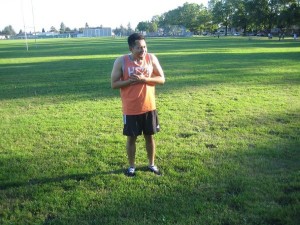A dislocated wrist is a common injury among gymnasts and those who are playing contact sports, but it can happen to anybody such as after a fall with an impact on the wrist of a stretched out hand. By enrolling in a course on first aid, you can readily manage this injury.
The joints in the wrist is comprised of eight carpal bones which are small bones that are attached to each other by ligaments. A dislocation of any of the carpal bones can cause severe pain and deformity of the wrist joints. A severe traumatic injury can cause fracture to the wrist bones.
Causes

- A dislocated wrist can occur after a fall over an overstretched hand as well as heavy impact on the wrist which can cause tearing and straining of the ligaments.
- A bone is dislodged from its place when the ligament is torn and distorted which usually occurs among those who are playing contact sports such as rugby and football.
- Dislocation of the wrist can occur among gymnasts since their movements involve precise and complicated motions of the joints in the wrist.
- Sports such as horse riding and cycling can also cause a dislocated wrist after a fall.
- Dislocation of the wrist can also occur among individuals who are active as well as the elderly since they face a higher risk for falls.
Symptoms of a dislocated wrist
- There is swelling and pain on the affected area right after the injury
- Evident deformity of the bones
- The wrist is tender when touched and pain increases with movement of the wrist joints
- The hand becomes weak along with tingling sensation in the fingers, usually in the thumb, middle and index fingers. The tingling is due to the compression of the median nerve which is found in the groove of the carpal bones.
- There is poor range of motion and difficulty in moving the wrist joints. There are also bruises and lacerations on the wrist due to the fall.
Treatment and home remedies
- Rest the wrist joints by avoiding any activities that add pressure on the affected area.
- Apply ice fomentation or ice pack over the affected area in order to help minimize the pain and swelling. The doctor places the wrist under a cast for one to two months and do not forget to elevate the injured area.
- A severe dislocation with fracture of the carpal bones would require surgical repair to help realign the bones. The doctor prescribes anti-inflammatory medications and analgesics to minimize the pain and swelling.
- After realignment of the wrist, soak the area under ice water at least 3-4 times daily and after 24 hours, apply warm compress to minimize the pain. Apply an elastic bandage to keep the wrist in place when applying the ice or heat compresses.
- When the healing process starts, restore the range of motion of the wrist with the help of physical therapy.
- Apply gentle massage on the affected area in order to minimize the swelling and perform light exercises of the hand and arm muscles for faster recovery.
FACT CHECK
https://www.healthline.com/health/dislocated-wrist
https://emedicine.medscape.com/article/98552-overview
https://www.epainassist.com/sports-injuries/wrist-injuries/wrist-dislocation
